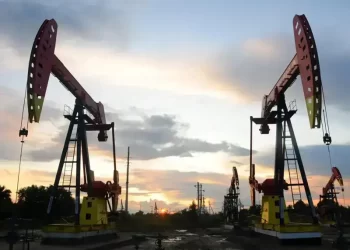LAHAINA, Hawaii (news agencies) — Josephine Fraser worried her young family’s next home would be a tent.
Fraser and her partner, their two sons and their dog had moved nine times in as many months, from one hotel room to another, since the deadliest U.S. wildfire in a century razed her hometown of Lahaina, on Maui. They would sometimes get just 24 hours to relocate, with no immediate word where they were headed.
Now, the Red Cross was warning that the hotel shelter program would soon end and Fraser was having trouble explaining to her 3-year-old why they couldn’t just go home.
“He just kept asking, ‘Why?’” she said. “It really broke me.”
Like Fraser, thousands on Maui have faced a year of anxious uncertainty since the Aug. 8, 2023, wildfire brought apocalyptic scenes of destruction to Lahaina, the historic former capital of the Hawaiian kingdom, forcing some survivors to flee into the ocean. The fire killed at least 102 people and displaced 12,000.
Government and nonprofit groups have offered temporary solutions for displaced residents, including providing hotel rooms, leasing apartments, assembling prefabricated homes and paying people to take in loved ones.
Disaster housing experts say the effort, expected to cost more than $500 million over two years, has been unprecedented in its cooperation among federal, state, county and philanthropic organizations toward keeping the community together.
But on a tourism-dependent island where affordable homes were in short supply even before the fire, a housing market squeezed by vacation rentals is undermining attempts to find long-term shelter for survivors even a year later.
Just about all of the 8,000 survivors put up in hotels have been moved into other accommodations, but many of those are pricey condos once rented to visitors, and they aren’t near residents’ jobs or their children’s schools.
Work to finish developments of temporary homes has been slowed by the difficulty of clearing toxic debris, obtaining materials from thousands of miles away, blasting and grading volcanic rock and installing water, sewer and electricity lines.
Members of at least 1,500 households have already left for other islands or states, some estimates say. Locals fear more will depart if they can’t find stable, affordable, convenient housing.
That’s particularly painful for Hawaii, where leaders have long worried the islands are losing their culture as housing costs fuel an exodus of Native Hawaiian and other local-born residents.
“You start to change the fabric of Hawaii,” said Kuhio Lewis, chief executive of the nonprofit Council for Native Hawaiian Advancement, which is involved in housing survivors. “That’s what’s at stake, is the future of who Hawaii is.”
Gov. Josh Green told media in an interview that the state is building transitional and long-term housing, changing laws to convert 7,000 vacation rentals to long-term rentals and swiftly settling lawsuits by fire survivors so plaintiffs can get the money they need to start rebuilding.
“Will some people leave? Of course,” Green said. “But most will stay, and they’ll really be able to stay if they get their settlements and can invest in their new houses.”
Plaintiffs and the state reached a $4 billion global settlement on Friday, according to court filings.
The Council for Native Hawaiian Advancement is building 16 modular units in Lahaina and 50 in Kahului, about an hour away, which kept Fraser and her family from winding up in a tent. In May, they moved into the first unit completed in Kahului, a small, white structure with two bedrooms and one bathroom.
The neighborhood remains a dusty construction site. The location is not convenient for her job as a manager at a hotel restaurant in Lahaina, but Fraser, 22, is grateful. She can cook for her kids and they can play outside.
“Everyone’s choice is to move out of Lahaina, to move off-island, to move to the mainland, and that’s not something that we want to do,” she said. “Lahaina is our home.”
Lahaina’s plight highlights an important question as human-caused climate change increases the severity and frequency of natural disasters: How far should governments go to try to keep communities together after such calamities?









